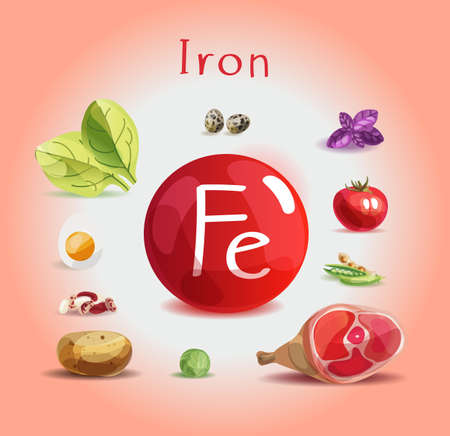Understanding UK Food Labelling Standards
When it comes to choosing foods that support an anti-inflammatory lifestyle, understanding food labels in the UK is essential. The UK follows strict food labelling regulations, designed both to protect consumers and to promote informed choices. These standards are largely shaped by retained EU law, as well as guidance from the Food Standards Agency (FSA) and the Department for Environment, Food & Rural Affairs (DEFRA). This regulatory framework ensures that information about ingredients, allergens, nutritional content, and health claims is presented clearly and accurately on packaging.
For consumers seeking anti-inflammatory ingredients—such as omega-3 rich oils, whole grains, or spices like turmeric—the ability to accurately interpret labels is crucial. All pre-packed foods must list their ingredients in descending order of weight, which allows you to spot beneficial components at a glance. Additionally, allergen information must be highlighted, helping those with sensitivities avoid potential inflammatory triggers.
Nutritional information panels provide a breakdown of fats, sugars, salt, and other key nutrients per serving or per 100g. This empowers shoppers to quickly compare products and identify options lower in pro-inflammatory elements like saturated fats or added sugars. Finally, any health or nutrition claims—such as “high in fibre” or “source of omega-3”—are strictly regulated; only products meeting specific criteria can make these statements.
By familiarising yourself with these labelling conventions, you can more confidently navigate supermarket shelves in the UK and select foods that align with your anti-inflammatory goals.
2. Spotting Anti-inflammatory Ingredients
When navigating food labels in the UK, knowing how to identify anti-inflammatory ingredients is essential for making informed choices. Popular options such as turmeric, ginger, and omega-3 fatty acids are increasingly found in both mainstream and health-oriented products. However, these beneficial ingredients are not always obvious at first glance, especially given the variety of terms and labelling practices used on British packaging.
Understanding Ingredient Lists
In the UK, ingredients are listed in descending order by weight. To spot anti-inflammatory additions, scan ingredient lists carefully—especially those near the top, as they are present in higher quantities. Some products highlight “functional” or “active” ingredients on the front of the pack, but it’s wise to verify their presence and quantity on the back label.
Common Terms for Anti-inflammatory Ingredients
| Ingredient | Labelled As | Typical Product Types |
|---|---|---|
| Turmeric | Turmeric, Curcumin, Curcuma longa | Smoothies, teas, ready meals, supplements |
| Ginger | Ginger, Zingiber officinale, Ginger extract | Herbal teas, biscuits, soups, juices |
| Omega-3 fatty acids | Omega-3, Fish oil (EPA/DHA), Flaxseed oil, Chia seed oil | Margarines, spreads, fortified eggs, cereals |
Navigating Health Claims and Certifications
The UK has specific regulations around health claims. While some packaging may state “contributes to normal heart function” (for omega-3) or “contains antioxidants,” these claims must be supported by evidence and approved wording. Look for certifications like “Soil Association Organic” for added assurance about sourcing standards.
Quick Reference When Shopping:
- Check ingredient order: The higher up turmeric or ginger appears, the more is present.
- Look for synonyms: Some brands use botanical names or extracts.
- Scrutinise health claims: Verify with official wording rather than vague suggestions.
- Be aware of portion sizes: A small mention in ingredients does not guarantee a meaningful amount.
This careful approach helps you confidently select foods rich in anti-inflammatory ingredients within the UK’s diverse supermarket shelves.

3. Differentiating Hidden Additives and Red Flags
When navigating food labels in the UK, distinguishing hidden additives from genuinely wholesome ingredients is crucial for anyone seeking anti-inflammatory foods. Many processed items on British supermarket shelves contain additives and artificial ingredients that can promote inflammation. Practical vigilance begins with scrutinising ingredient lists for familiar red flags. Common offenders include artificial sweeteners (such as aspartame or saccharin), preservatives (like sodium benzoate or sulphites), and emulsifiers (for example, E471 or polysorbates). These are often listed under technical names or E-numbers, which may seem innocuous but can trigger inflammatory responses in sensitive individuals.
Another key point is to be wary of ambiguous marketing terms like “natural flavourings” or “made with whole grains.” In the UK, these phrases aren’t strictly regulated and can be used even when a product contains only trace amounts of a beneficial ingredient alongside less desirable additives. Products boasting “low fat” or “sugar-free” labels frequently compensate with extra salt, chemical thickeners, or synthetic flavour enhancers. Always look beyond the front-of-pack claims and delve into the fine print.
For practical shopping: prioritise short ingredient lists with recognisable foods, avoid products where sugar (or its many aliases such as glucose syrup, dextrose, or fructose) appears high up in the list, and be cautious of colourants (like tartrazine/E102) or flavour enhancers (such as monosodium glutamate). If you’re unsure about an additive, resources like the Food Standards Agency website offer comprehensive guides to E-numbers and their safety profiles for UK consumers. By cultivating this label-reading habit, you’ll be better equipped to make informed choices that support an anti-inflammatory diet on your next trip to the shops.
4. Interpreting Nutritional Information
Understanding food labels is essential when following an anti-inflammatory diet in the UK. With a myriad of options on supermarket shelves, knowing how to read and interpret nutritional information can make all the difference. Here’s a practical guide to help you decode traffic light nutrition labels, ingredient lists, and allergen warnings, ensuring your choices support your health goals.
Traffic Light Nutrition Labels: A Quick Overview
The UK uses a colour-coded “traffic light” system on packaged foods to highlight key nutrients: fat, saturated fat, sugars, and salt. Each is marked as green (low), amber (medium), or red (high). For an anti-inflammatory approach, prioritise foods with mostly green or amber indicators—especially for saturated fats and sugars.
| Nutrient | Green (Low) | Amber (Medium) | Red (High) |
|---|---|---|---|
| Fat | ≤3g per 100g | >3g to ≤17.5g per 100g | >17.5g per 100g |
| Saturates | ≤1.5g per 100g | >1.5g to ≤5g per 100g | >5g per 100g |
| Sugars | ≤5g per 100g | >5g to ≤22.5g per 100g | >22.5g per 100g |
| Salt | ≤0.3g per 100g | >0.3g to ≤1.5g per 100g | >1.5g per 100g |
Ingredient Lists: Spotting Anti-inflammatory Choices
Ingredients are listed in order of quantity, with the main ingredient first. For an anti-inflammatory focus:
- Avoid: Ingredients like “hydrogenated oils,” “glucose syrup,” and artificial additives.
- Seek out: Olive oil, nuts, seeds, whole grains, turmeric, ginger, and leafy greens.
- If sugar or refined flours are among the top three ingredients, consider alternatives.
Allergen Warnings and Additives: Staying Mindful
The UK requires clear allergen labelling for major allergens such as gluten, milk, nuts, and soy. Some of these ingredients can also contribute to inflammation in sensitive individuals or those with autoimmune concerns. Watch for statements like “may contain traces of…” if you have known sensitivities or allergies that might trigger inflammatory reactions.
Tips for Smarter Shopping:
- Compare similar products side by side using traffic light labels.
- Look beyond marketing claims (“natural”, “healthy”) and inspect the actual ingredients list.
- If unsure about an ingredient, research its inflammatory potential before purchasing.
- Select products with minimal processing and simple ingredient lists wherever possible.
Summary Table: Key Points for Label Reading in the UK
| Aspect | What to Check For |
|---|---|
| Traffic Light Labels | Mainly green/amber for lower fat, saturates, sugar, salt |
| Ingredients List | No refined oils/sugars high up; look for whole foods/spices |
| Allergen Warnings | Avoid if you have sensitivities/allergies |
This practical approach will help you confidently select foods that align with an anti-inflammatory lifestyle while navigating the unique nuances of British food labelling.
5. Shopping Locally: Markets, Health Food Shops, and Online
Finding anti-inflammatory ingredients in the UK can be much more rewarding—and effective—when you explore sources beyond the supermarket aisles. Here are a few practical suggestions for sourcing top-quality, anti-inflammatory foods from local British markets, specialist health food shops, and trusted online retailers.
British Farmers’ Markets: Freshness and Provenance
Local farmers’ markets are an excellent place to start your search. In towns and cities across the UK, these markets often feature seasonal produce grown with fewer pesticides and minimal processing. When selecting vegetables like kale, spinach, or purple sprouting broccoli—all naturally anti-inflammatory—ask stallholders about their growing methods. Many small-scale British producers prioritise organic or low-intervention farming practices but may not always carry official certification due to cost.
Supporting Local Producers
Shopping at these markets not only supports local agriculture but also gives you the chance to discuss provenance directly with growers. Look for wild-caught fish (such as mackerel or herring) and free-range eggs, both rich in omega-3 fatty acids known for their anti-inflammatory benefits.
Health Food Shops: Specialist Knowledge and Unique Finds
Specialist health food shops—whether independent or part of a chain like Holland & Barrett—often stock items that go beyond what’s available in larger supermarkets. Here you’ll find cold-pressed oils (such as flaxseed or hemp), turmeric root, fresh ginger, and a range of nuts and seeds, all clearly labelled for origin and processing methods. Staff in these shops can be an invaluable resource; don’t hesitate to ask for recommendations on UK-produced or ethically-sourced products high in anti-inflammatory properties.
Reading Labels Carefully
These shops usually pride themselves on transparency, making it easier to spot terms like “organic”, “unrefined”, or “no added sugars” on packaging. This diligence is especially important when buying items such as nut butters or wholegrain products.
Online Retailers: Convenience Meets Quality
If you’re seeking convenience or hard-to-find ingredients (for example, Scottish seaweed flakes or cold-milled linseed), reputable online retailers can deliver directly to your door. Websites like Ocado, Planet Organic, and Abel & Cole offer detailed product descriptions and filter options for dietary needs—including gluten-free, vegan, or organic. Always double-check customer reviews and seek out brands with clear sourcing policies for peace of mind.
Tip: Prioritising Trusted Sources
Whether shopping online or in person, always favour sellers who provide detailed information about ingredient origins and processing. Certifications from organisations like the Soil Association (for organic) or the Marine Stewardship Council (for sustainable seafood) are good indicators of quality and responsible sourcing within the UK context.
6. Making Informed Choices: Everyday Examples
Empowering yourself to make healthier choices in the UK starts with practical experience. Let’s look at real-world examples of reading and comparing food labels from popular supermarket brands, focusing on anti-inflammatory ingredients and those best avoided.
Comparing Wholemeal Bread: Tesco vs Sainsbury’s
Suppose you’re choosing between Tesco’s and Sainsbury’s wholemeal bread. Scan the ingredient list for whole grains (look for “whole wheat flour” as the first ingredient) and fibre content. Avoid breads listing “glucose syrup” or “hydrogenated oils”—these can promote inflammation. Notice that Sainsbury’s version contains “oat fibre,” a bonus for anti-inflammatory properties, while Tesco’s may include “caramelised sugar” for colour, which adds unnecessary sugar.
Spotting Sneaky Additives in Yoghurts
Yoghurt is often marketed as healthy, but check the label for added sugars and artificial sweeteners. Comparing Müller Light with Yeo Valley Natural Yoghurt: Müller often includes “aspartame” and “modified maize starch,” while Yeo Valley lists only “milk” and live cultures—making it a clear winner for an anti-inflammatory diet.
Understanding Ready Meals: Waitrose vs Iceland
Ready meals are convenient, but their labels can be tricky. Consider a chicken curry from Waitrose and one from Iceland. The Waitrose version might highlight “rapeseed oil,” “ginger,” and “turmeric”—all known for their anti-inflammatory benefits—while Iceland’s may contain “vegetable oil (palm),” “maltodextrin,” and excess salt, which you’d want to limit.
Practical Tips When Shopping
Always check the first three ingredients—they tell you what makes up most of the product. Look out for hidden sources of sugar (like “fructose” or “dextrose”) and avoid E-numbers linked to inflammation (such as E621, monosodium glutamate). When in doubt, choose products with fewer ingredients and words you recognise.
The more you practise these comparisons in your weekly shop, the more confident you’ll become at navigating food labels in the UK. These skills put you in control, helping you support your health through informed everyday choices.

